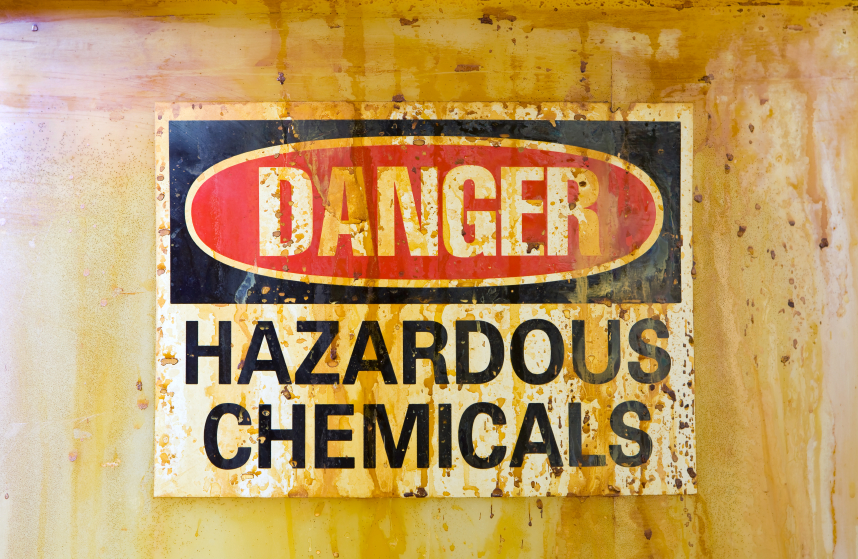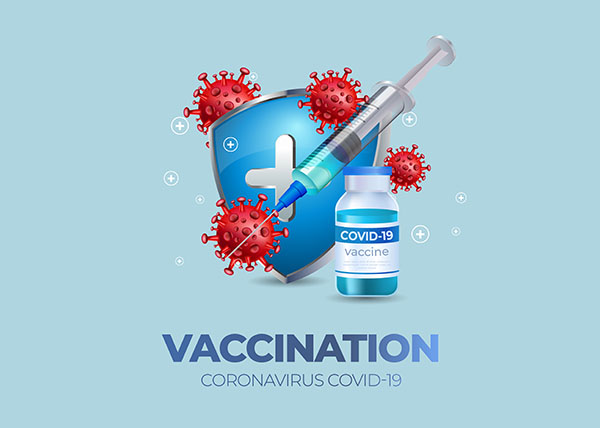How PFAS, also known as forever chemicals, increase your cancer risk
01/20/2025 / By Evangelyn Rodriguez

The United States is facing another crisis, one that involves its public water systems.
According to a report released by the Environmental Protection Agency (EPA) on Nov. 20, per- and polyfluoroalkyl substances (PFAS), also known as forever chemicals, have been found to pollute 2,394 water sites, exposing millions of Americans to these man-made fluorinated chemicals that have been classified as “possible human carcinogens.”
Researchers from the Environmental Working Group (EWG) estimate that more than 200 million Americans are currently drinking water contaminated with these cancer-causing chemicals. PFAS earned the moniker “forever chemicals” because of their high resistance to breakdown, which allows them to persist in nature. PFAS also accumulates inside the body and can cause significant damage and toxicity even at low levels.
Back in 2012, a panel consisting of three epidemiologists were tasked to evaluate whether there is a probable link between exposure to perfluorooctanoic acid (PFOA), a PFAS chemical also known as C8, and any human disease. After monitoring the health of 69,000 residents of West Virginia who were exposed to C8 in their drinking water, the panel concluded that there is a probable link between C8 exposure and high cholesterol, ulcerative colitis, thyroid disease, testicular cancer and kidney cancer.
A recent study published in JNCI: Journal of the National Cancer Institute also linked 2-(N-methylperfluorooctanesulfonamido)acetic acid, a PFAS that has been found in watersheds, to acute lymphoblastic leukemia, the most common childhood cancer in the world. The study also found an association between exposure to high levels of perfluorooctanesulfonic acid (PFOS), another PFAS chemical used in many consumer and industrial products such as carpets, upholstered furniture, non-stick cookware and leather products, and a increased risk of acute lymphoblastic leukemia in children.
According to the study, children “are prenatally exposed through maternal transfer of PFAS to cord blood,” suggesting that these widespread, environmentally persistent chemicals endanger nor just individuals directly exposed to them but even babies who are still in their mothers’ wombs. (Related: From womb to tomb: “Forever chemicals” can be passed on to babies during pregnancy.)
Now findings from tests conducted under the EPA’s Fifth Unregulated Contaminant Monitoring Rule, or UCMR 5, which mandates that water utilities across the U.S. be tested for 30 different PFAS compounds, confirm that one or more of these toxic chemicals are present in drinking water, putting millions of Americans at risk of developing cancer.
How PFAS cause cancer in humans
The PFAS group of chemicals are synthetic compounds distinguishable by their chemical structure – that is, they all possess a chain made up of carbon atoms bonded to fluorine. These forever chemicals are often used in industrial products because of their desirable qualities, which include heat, grease and water resistance. The introduction of PFAS in everyday products began in America in the 1940s, and continuous use throughout the decades has led to the contamination of U.S. soil, water supplies and livestock with these dangerous compounds.
High concentrations of PFAS have also been detected in the blood of humans who frequently use these everyday products. Firefighting foams, in particular, which are commonly used at airports and military bases, have been identified as a significant source of PFAS exposure. A study published in 2023 investigating PFAS exposure in the U.S. military found elevated concentrations of PFOS and PFOA, typical ingredients in firefighting foams, and perfluorohexanesulfonic acid (PFHxS), a contaminant of drinking water, in the blood of active-duty Air Force servicemen.
High blood levels of PFAS, specifically PFOS, were linked to an increased risk of testicular germ cell tumors in Air Force servicemen. Back in 2014, an estimated 664 current or former military fire- or crash-training sites were suspected of contamination with PFAS chemicals. In 2018, the Pentagon admitted to knowing or suspecting over 400 military sites of PFOS and PFOA releases into groundwater, impacting not just the health of military servicemen but also that of the communities living near these bases. (Related: EPA monitoring a new class of toxic PFAS in municipal water supplies – GenX chemicals.)
According to a study published in the International Journal of Environmental Research and Public Health, “several PFAS exhibit one or more of the key characteristics of carcinogens.” Although current studies are yet to confirm whether any PFAS can cause chronic inflammation, cell immortalization (a step that governs the development of human cancers) and alterations in DNA repair, multiple reports have found evidence of PFAS chemicals inducing oxidative stress and immunosuppression — two mechanisms that are strongly linked to cancer development.
In an article by The Epoch Times, Georgetown University School of Medicine Professor of Oncology Sivanesan Dakshanamurthy noted that PFAS accumulate inside the human body, particularly in blood serum and vital organs such as the liver, kidneys and male testes. What makes them incredibly dangerous is that “they interact with cellular receptors and signaling pathways, potentially initiating tumor growth.” Dakshanamurthy added that PFAS can also damage DNA and cell components and interfere with the immune system’s ability to kill cancer cells.
Cancers linked to PFAS chemicals
Here is a list of human cancers that have been linked to specific PFAS chemicals by numerous studies, as summarized by investigators from the National Cancer Institute’s Division of Cancer Epidemiology & Genetics:
- Kidney cancer – Investigators have found a high incidence of kidney cancer and death among individuals who work in chemicals plants producing PFAS, specifically PFOA, and residents of communities surrounding these sites. There is also suggestive evidence of increased renal cell carcinoma (the most common form of kidney cancer) risk among individuals with high levels of PFNA in their blood serum.
- Testicular cancer – As mentioned above, research involving U.S. military servicemen strongly suggests that exposure to PFOS, PFOA and PFHxS is linked to an elevated risk of testicular cancer. (Related: Forever chemicals pose greater cancer risk to women than men, study finds.)
- Breast cancer – PFAS have been shown to have estrogenic and endocrine-disrupting activities, thus increasing their likelihood of causing breast cancer. A study on French women with postmenopausal breast cancer found “a positive association with pre-diagnostic serum PFOS concentrations, particularly for hormone receptor-positive tumor subtypes.” A prospective study published in the International Journal of Cancer also linked high blood PFOS concentrations to hormone receptor-positive tumors and high blood PFOA concentrations to hormone receptor-negative tumors.
- Ovarian cancer – In a study published in the International Journal of Molecular Sciences, researchers found that ovarian cancer cells exposed to PFAS mixtures including PFOA, perfluoroheptanoic acid (PFHpA) and perfluoropentanoic acid (PFPA), three of the top contaminants found in water supplied by the Orange Water and Sewer Authority in North Carolina, showed increased survival even after treatment with the chemotherapy drug, carboplatin. This suggests that PFAS mixtures can not only cause cancer but also increase cancer resistance to chemotherapy.
- Non-Hodgkin lymphoma – A recent study published in the journal Environment International reported finding a significant association between PFHxS and diffuse large B cell lymphoma, a fast-growing form of non-Hodgkin lymphoma. Studies are ongoing to further understand this relationship.
- Thyroid cancer – A study published in eBioMedicine confirmed a positive association between elevated blood concentrations of PFOS, PFNA, perfluorooctylphosphonic acid (PFOPA) and PFHxS and the risk of developing thyroid cancer. This research was conducted with the participation of 88 patients with papillary thyroid cancer, the most common type of thyroid cancer. (Related: EPA claims it has no legal obligation to regulate toxic PFAS in sewage sludge, dismisses pollutant that affects every American.)
The alarming increase in PFAS contamination especially in water supplies across the U.S. needs to be addressed with more research, increased public awareness, transparency from manufacturers and stricter regulation by the government. Most importantly, sources of contamination must be stopped promptly and contaminated sites cleaned up to reduce the exposure of communities to these cancer-causing chemicals.
Learn more about what the government is (or is not) doing about the PFAS crisis at EPA.news.
Watch the following video about “PFAS and cancer: Unveiling the risks of forever chemicals.”
This video is from the Daily Videos channel on Brighteon.com.
More related stories:
Scary new study reveals PFAS “forever chemicals” can seep through human skin.
Common bandages contain alarming levels of cancer-causing PFAS, which leach directly into the blood.
Study: Toxic FOREVER CHEMICALS are found in many cosmetics.
Texas sues 3M and DuPont for deceptive marketing of PFAS-contaminated household products.
Study finds so-called “greener” alternatives to plastic straws contain harmful PFAS.
Sources include:
P65Warnings.ca.gov [PDF]
Submit a correction >>
Tagged Under:
big government, cancer criminals, Dangerous, Endocrine disruptors, environment, EPA, forever chemicals, health science, PFAS, toxic chemicals, toxic ingredients, toxic water, toxins, water supply
This article may contain statements that reflect the opinion of the author





















